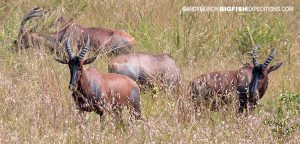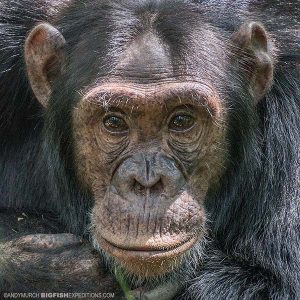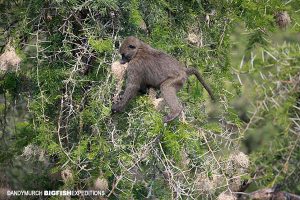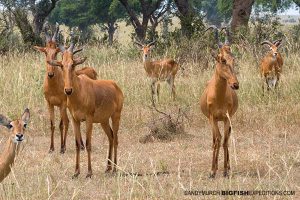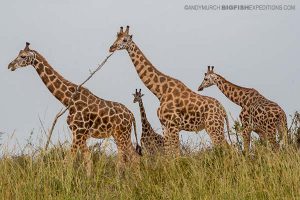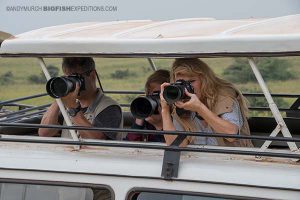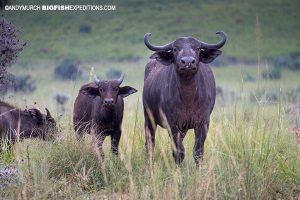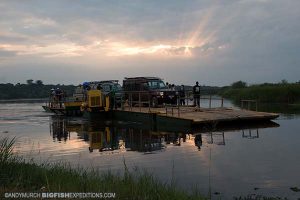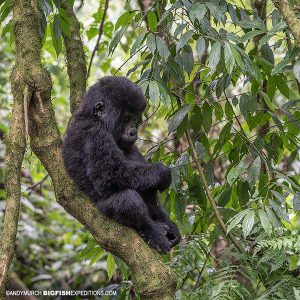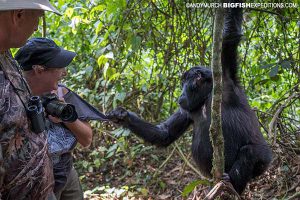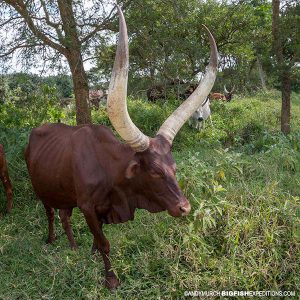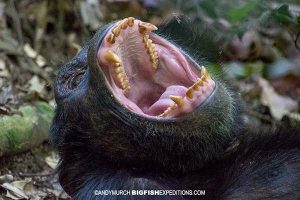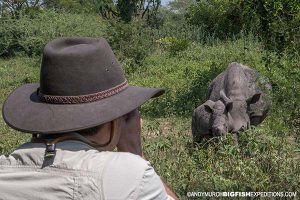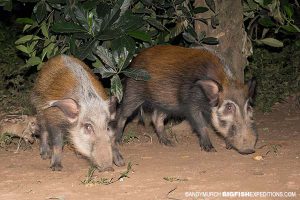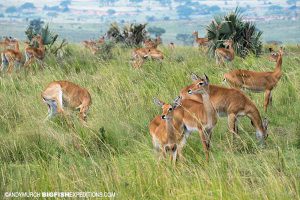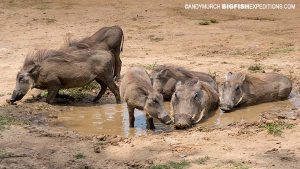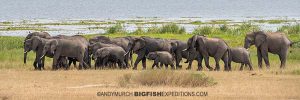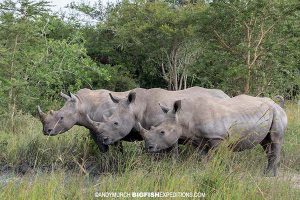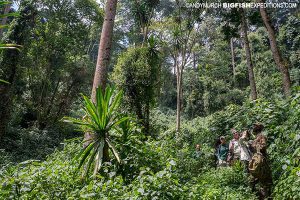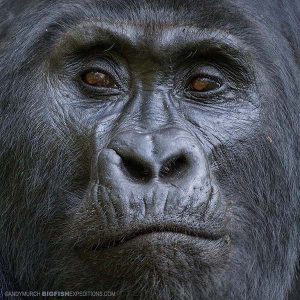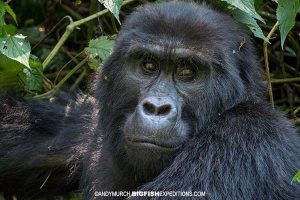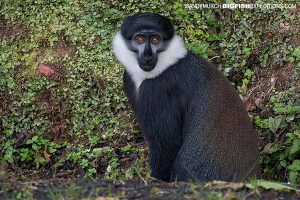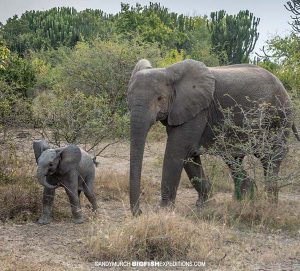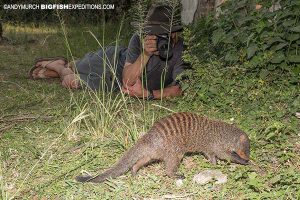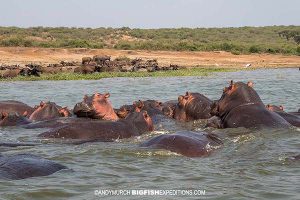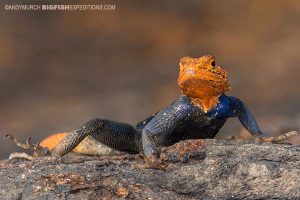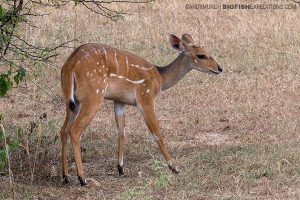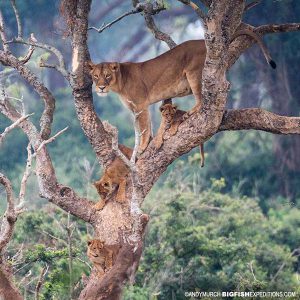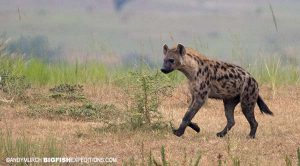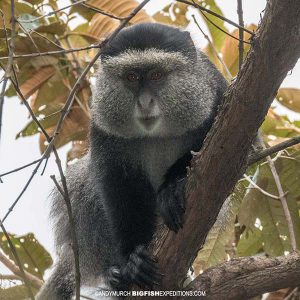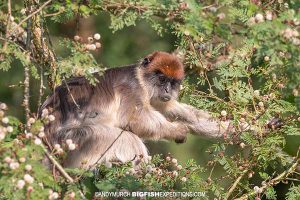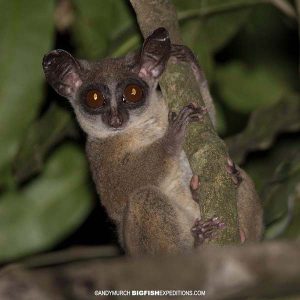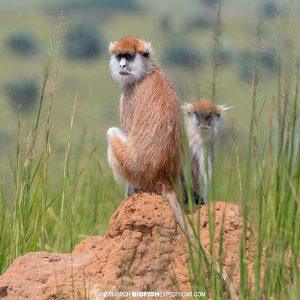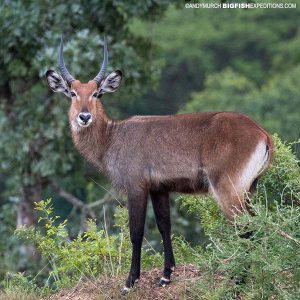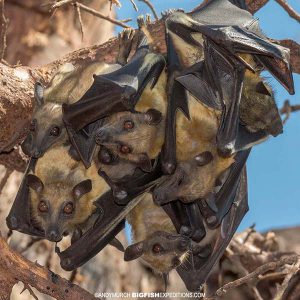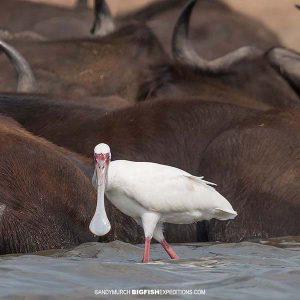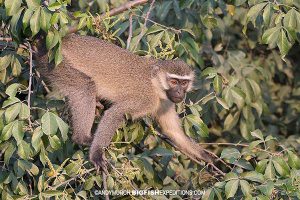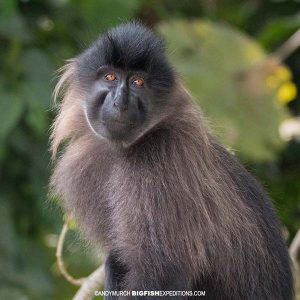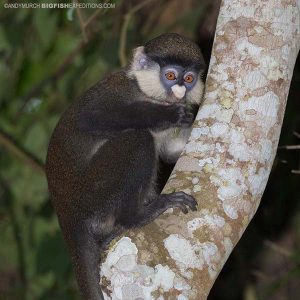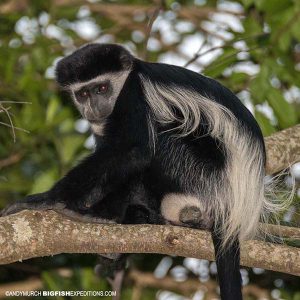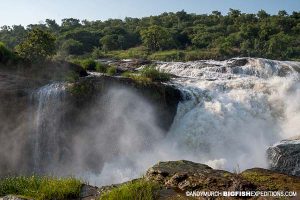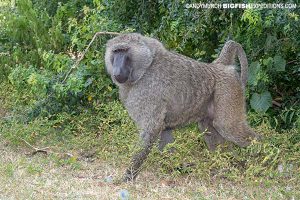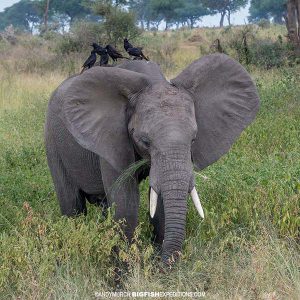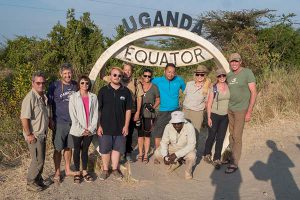Big Fish Expeditions 2018 Primate Safari in a Nutshell
There are no adjectives that can adequately describe the diversity, sheer biomass of animals and quality and intensity of the encounters we enjoyed.
We saw 13 species of primates and photographed 12 of those at close range. We also saw Africa’s Big Five and so many other exotic creatures that I can’t squeeze them all into this trip report.
We ran two 9 day trips. Almost all of the animals shown below were seen by both groups. One group got better rhinos, the other got better lions. That’s Africa but no one went home disappointed. The term ‘Life Changing Trip’ got thrown around on this expedition more than any other trip we’ve done. I can’t wait to get back next year and do it all over again.
That is more than enough banter. Here is what we saw:
Mountain Gorillas! This what is was all about and the gorilla encounters were incredible. They sat, they ate, they swung from trees, they brushed past us and one even grabbed one of our guests by the t-shirt and tried to lead her off into the jungle. For a minute I thought she might go along with it 🙂
Gorilla trekking isn’t a walk in the park. Its hard work hiking up through the cloud forest to where the gorillas are feeding but the terrain in Bwindi Impenetrable Forest make the journey as magical as the encounters themselves.
The baby gorillas could not have been cuter!
Chimpanzees. Spending time in Kibale National Park with our closest relatives was a real highlight of the trip.
Their human-like expressions suck you in. I cannot help but wonder what this chimp is thinking. Is he sad, happy, or just at peace?
Olive Baboons. These guys were everywhere we went; in the forest, on the savannah and hanging out on the country roads. They like open spaces where they can see predators from a distance but they are always ready to slip back into the forest at a moment’s notice e.g. if the alpha-male screams at them.
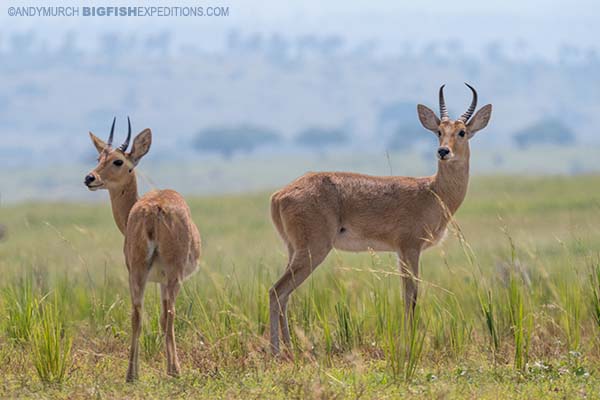
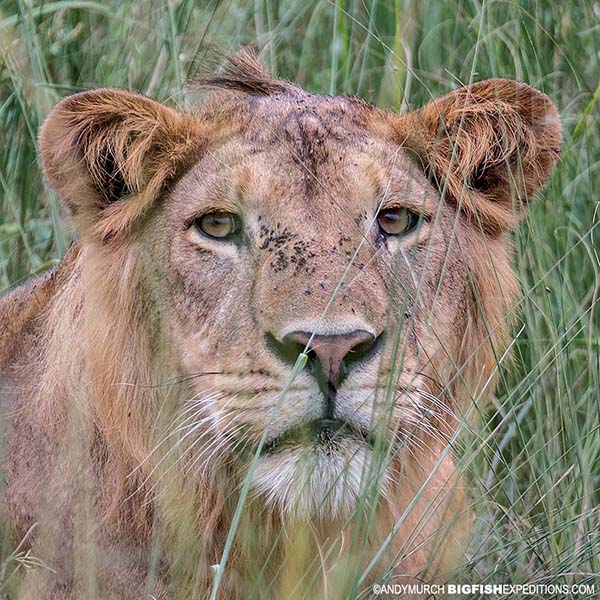
Olive baboons raiding weaver bird nests on the banks of the Kazinga Channel in Queen Elizabeth National Park.
Patas Monkeys. These unusual monkeys are the cheetahs of the primate world. They live on the savannah where there are not many trees so they have had to pick up the pace. When chased by a predator they can run at speeds of more than 50kmh.
Size-wise, the next monkey down is probably the Blue Monkey. We saw these cute but elusive primates in Bwindi Impenetrable Forest while gorilla trekking.
While in Bwindi and also in Kibale National Park we came across troops of L’Hoests Monkeys.
Kibale was fantastic for primate diversity. Each week we did a smamp tour where we saw L’Hoests plus redtail monkeys, red colobus monkeys, Guereza Colobus monkeys (aka black and white colobus monkeys) and Grey-cheaked Mangebays.
On our night walk in Kibale we also spotted two species of Galegos: Thomas’s and Demidof’s. They are fast little monkeys so I only managed to get images of the larger Thomas’s Galego when it froze for a few minutes mezmirized by our torches.
Finishing up the primate list for this year is the Vervet Monkey. Vervets are a super-species which is the fancy way of saying multiple species that all look alike and are too hard to identify accurately in the field. So these could actually be tantalus monkeys, green monkeys or maybe even grivet monkeys. Either way, they are a common primate that is not camera shy. We saw troops of them in or near each park that we visited.
First stop out of Kampala was Ziwa Rhino Sanctuary; a small but fabulous game park where you can literally walk with wild White Rhinos.
We also bumped into a large herd of domesticated Ankole Cattle. This ancient breed has massive horns and is considered a separate sub-species from all other cows: Bos taurus africanus.
Our second destination was Murchison Falls National Park – one of the most spectacular parks in East Africa.
It is tough to find a spot anywhere within this enormous protected area where you won’t see animals of one description or another. The park boasts more than 900 Rothschild Giraffes, 40,000 Uganda Cob, 1400 African Elephants, Huge herds of buffalo, Jacksons Hartebeests, Oribi and so much more.
A shy Bushbuck. This species is not uncommon but they are quick to disappear when they know they’ve been spotted.
Common Warthogs taking a bath in the midday sun. They do this to keep cool and to deter parasites.
African Elephant herds in Murchison Falls can be huge. We have seen more than 100 individuals moving nose-to-tail along traditional migratory routes.
Reedbucks on the Savannah. First time I’ve seen this elusive species in Uganda.
Tree climbing lions. We usually see a few lions in Murchison but this was a particularly good encounter. Mom climbed up and waited for her fur balls to gingerly join her. The took a little coaxing and she finally went down and grabbed the bottom by the scruff to lift him off the ground for that initial boost.
In the evening we had a short encounter at the lodge with a family of bush pigs. Unlike the warthogs, these are nocturnal forest dwellers and very shy around humans.
Although not as high or wide as Victoria Falls, Murchison Falls is the powerful waterfall on Earth.
The top of the Falls is a great place to look for yellow headed agama lizards; an endemic species only found in Uganda.
After Murchison we moved to Kibale where we saw many of rthe primate species on the trip. Then we continued on to Queen Elizabeth National Park. This involved a quick stop at the equator for a group photo!
While there we saw many more elephants and lots more of the antelopes that we had seen in Murchison including more lions.
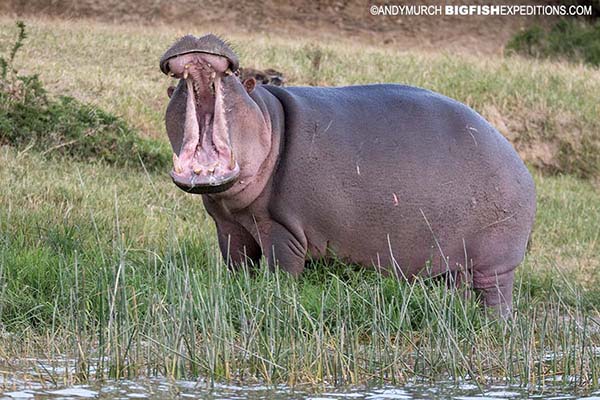
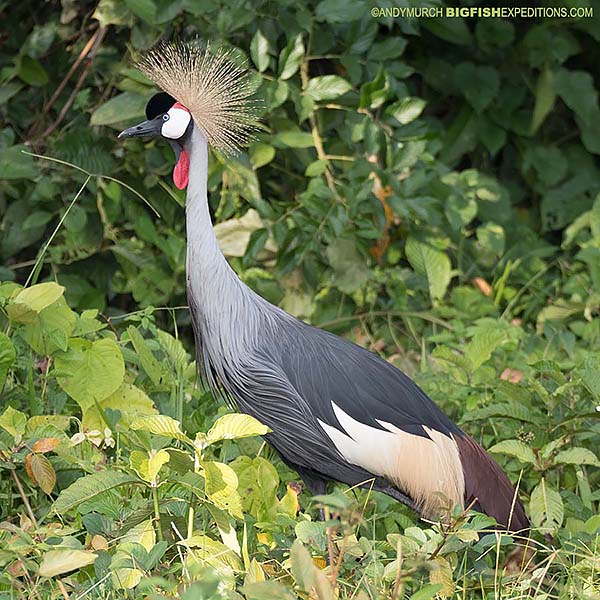
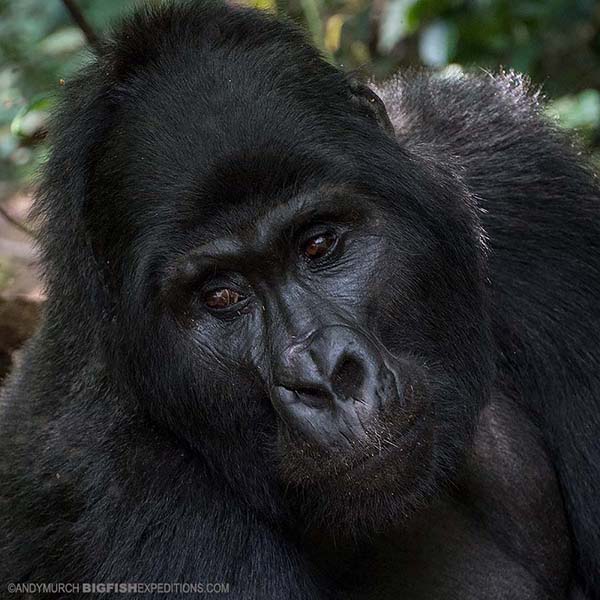
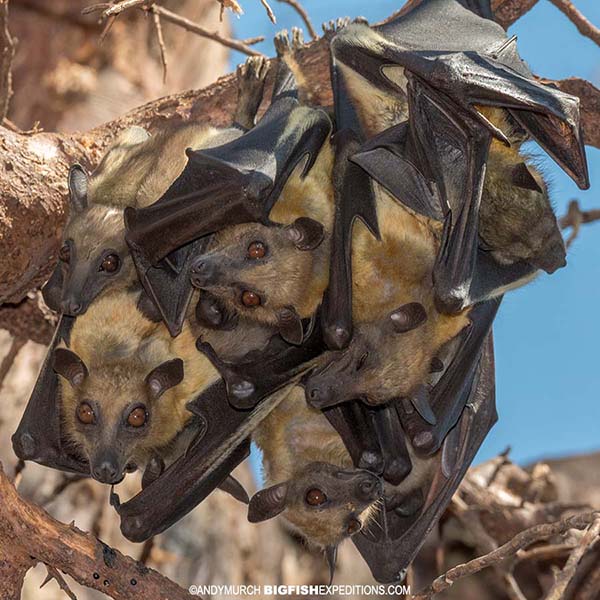
We also did a river cruise on the Kazinga Channel whic was a packed with more elephants and buffalos and hundreds of hippos.
During the day, hippos spend most of their time in the water but we were lucky enough to see some on the shore. One showed us why hippos are considered to be the most dangerous animals in Africa!
As well as hundreds of mammals, the river is a great place to photograph exotic birds like this spoonbill.
Speaking of birds, while we were in Kibale, we found a pair of crowned cranes; the national bird of Uganda.
We also went to visit a habituated group of banded mongooses.
We drove south from Queen Elizabeth to Bwindi. On the way we came across a herd a Topi. A black faced antelope that looks a lot like a hartebeest.
Then it was time for our gorilla trek.
Armed with hundreds of images and incredible memories we headed back to Entebbe for the flight home but our animal encounters were not quite over. On a country road we found a colony of what I believe were Straw Coloured Fruit Bats. Bats are difficult to identify so I could be wrong but either way, it was fun watching them jostling for the best roosting sites.
